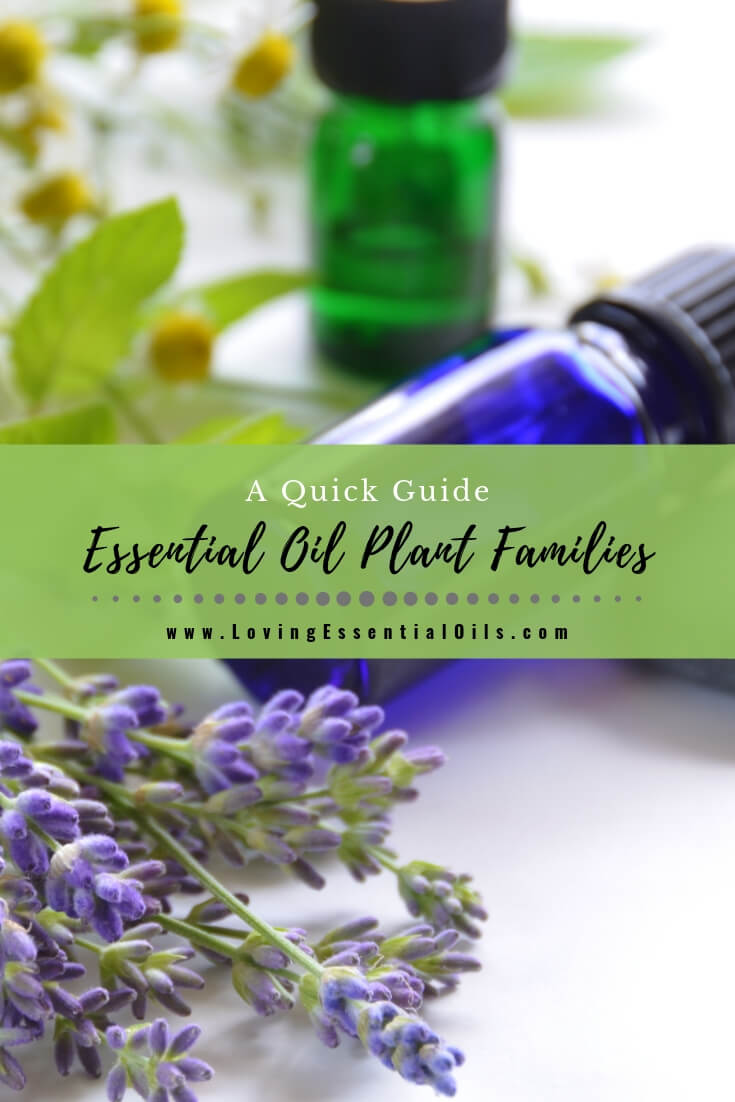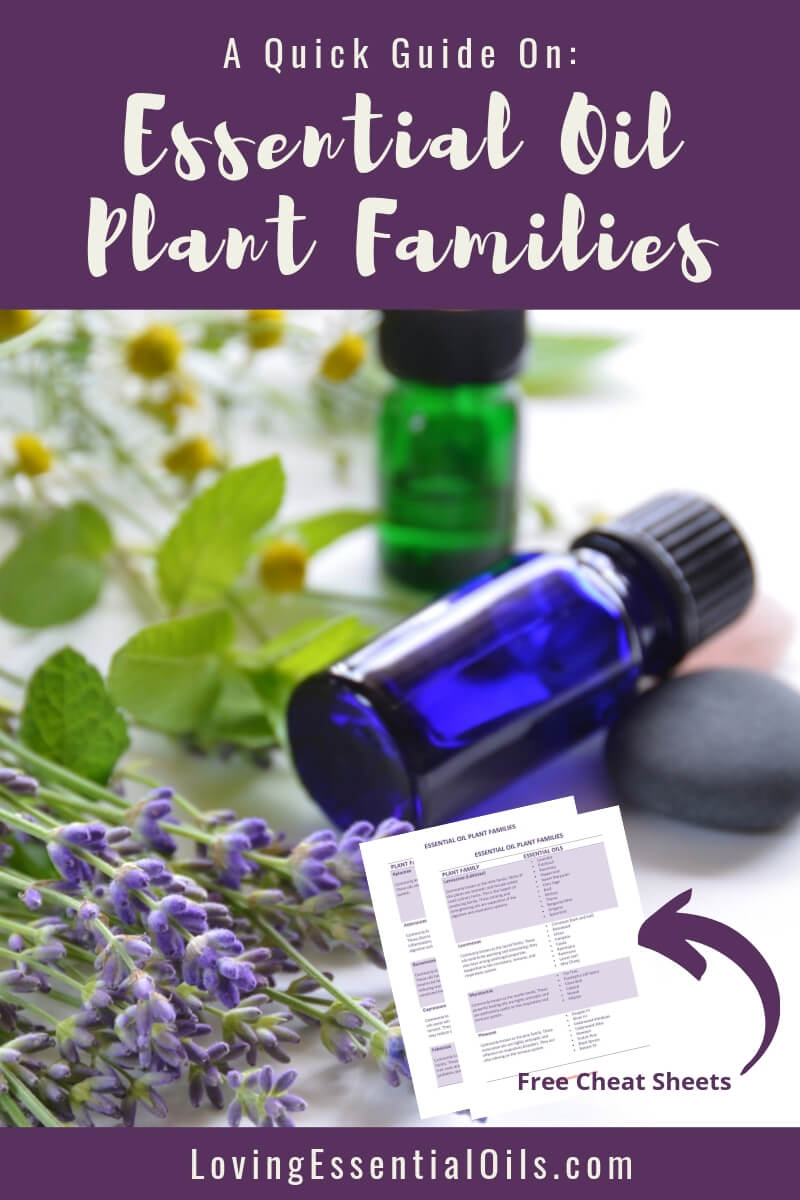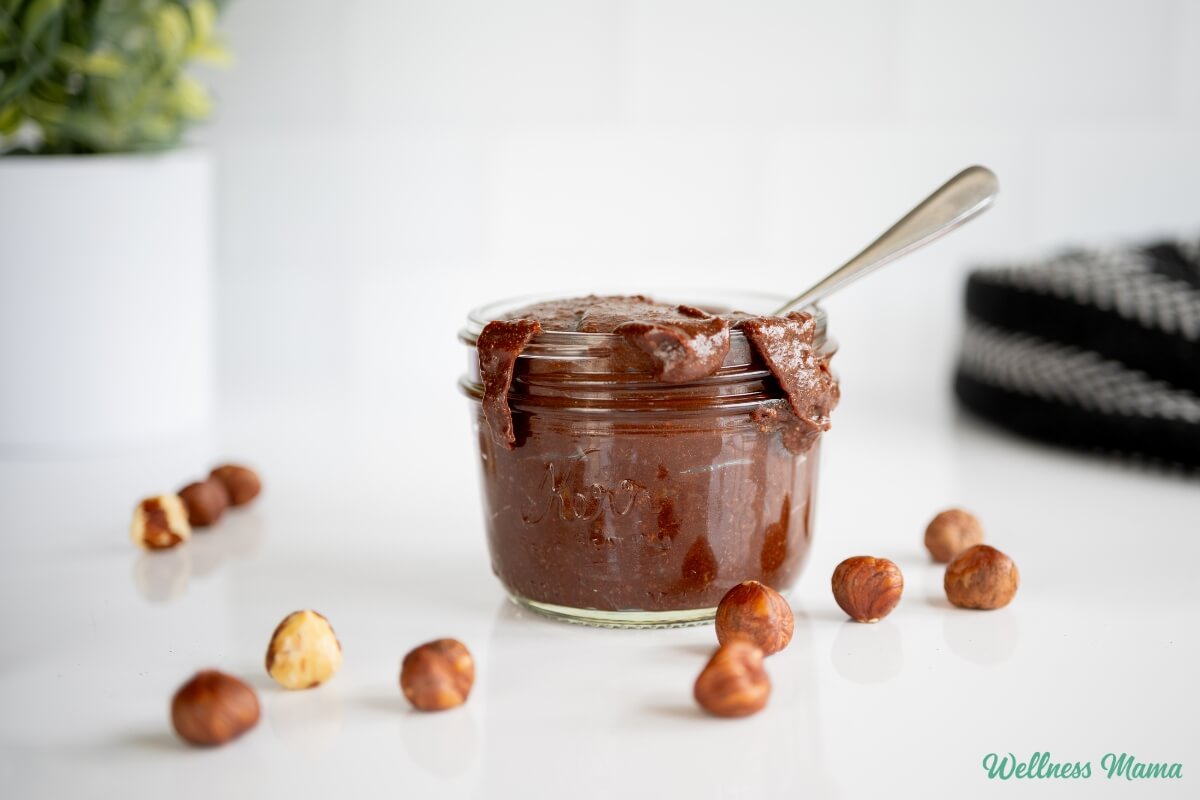Essential Oil Plant Families - A Quick Guide with Cheat Sheets
If you're like me, you love learning about plants. It's so interesting to see how different plants are related and learn their individual purposes. In the world of essential oils, it's especially important to learn about the plant families because many oils are distilled from multiple plants. Today, I want to share with you some of the most common essential oil plant families and what they're used for. Keep in mind that this is just a general overview – each essential oil has its own unique properties and uses!More

Have you ever thought about essential oil plant families? It is yet another way to learn about and understand your oils better.
Essential oils in the same plant families (also called botanical families) have similar characteristics and therapeutic properties.
Knowing plant families can help when you need to find an oil substitute, just look at the plant family and see what other oils you can use instead!
As a general rule of thumb, essential oils from the same botanical family tend to blend well together. This can be helpful when making DIY Recipes and Essential Oil Blends.
Get the Free Plant Family Printable Cheat Sheet at the bottom of the blog post.

Aromatherapy Plant Families
Here are some of the common plant families used in aromatherapy, including essential oils from each.
Apiaceae
Commonly known as the umbellifer family. These oils are balancing to the digestive system. Example: Fennel, Dill.
Asteraceae (Compositae)
Commonly known as the aster or daisy family. These diverse oils tend to be antiseptic, anti-inflammatory and soothing to the skin and the digestive system. Example: Roman and German Chamomile.
Burseraceae
Commonly known as the torchwood family. These oils have expectorant properties and tend to be healing to wounds and ulcers, reducing scar tissue. Also assist with emotional balance. Example: Myrrh, Frankincense.
Cupressaceae
Commonly known as the cypress family. These oils assist with stress, insomnia, and nervous tension. They have astringent properties and may reduce cellulite. Example: Cypress, Juniper Berry.
Fabaceae
Commonly known as the legume or pea family. These essential oils are distilled from tree resin and frequently used for respiratory problems and in skin care. Example: Copaiba.
Lamiaceae (Labiatae)
Commonly known as the mint family. Many of the plants are aromatic and include widely used culinary herbs. This is the largest oil producing family. These calming and strengthening oils are supportive of the digestive and respiratory systems.
Laurenceae
Commonly known as the laurel family. These oils tend to be warming and stimulating, they also have strong antifungal properties. Supportive to the circulatory, immune, and respiratory system.
Myrtaceae
Commonly known as the myrtle family. These powerful healing oils are highly antiseptic and are particularly useful on the respiratory and immune system.
Pinaceae
Commonly known as the pine family. These restorative oils are highly antiseptic and effective on respiratory disorders. They are also calming on the nervous system.
Poaceae (Gramineae)
Commonly called the grass family. The oils in this family tend to be grounding and strengthening. Used for stimulation of the digestive system, disinfection, and for pest and parasite control.
Rutaceae
Commonly known as the rue or citrus family. These refreshing oils are uplifting and supportive of the nervous and immune system.
Zingiberaceae
Commonly known as the ginger family. These warming oils are supportive of the digestive system.

List of Essential Oils In Each Plant Family
Plant Family |
Essential Oils |
|
Apiaceae |
|
|
Asteraceae (Compositae) |
|
|
Burseraceae |
|
|
Cupressaceae |
|
|
Fabaceae |
|
|
Lamiaceae (Labiatae) |
|
|
Laurenceae |
|
|
Myrtaceae |
|
|
Pinaceae |
|
|
Poaceae (Gramineae) |
|
|
Rutaceae |
|
|
Zingiberaceae |
|
Free Printable Plant Family Cheat Sheet
Get this Quick EO Guide! We aren't even asking for your email, we just ask that you share this page on your favorite social media site like pinterest, twitter, facebook or instagram so others can enjoy as well.
Share on Pinterest

More Essential Oil Posts to Enjoy:
- Fan Favorite Essential Oil Books
- 20 Amazing Ways to Use Essential Oils For Health
- Essential Oils For Beginners
- How to Buy Quality Essential Oils
- Essential Oil Aromas with Free Cheat Sheets
- Essential Oil Safety Tips
- Essential Oil Chemotypes
What's Your Reaction?


















